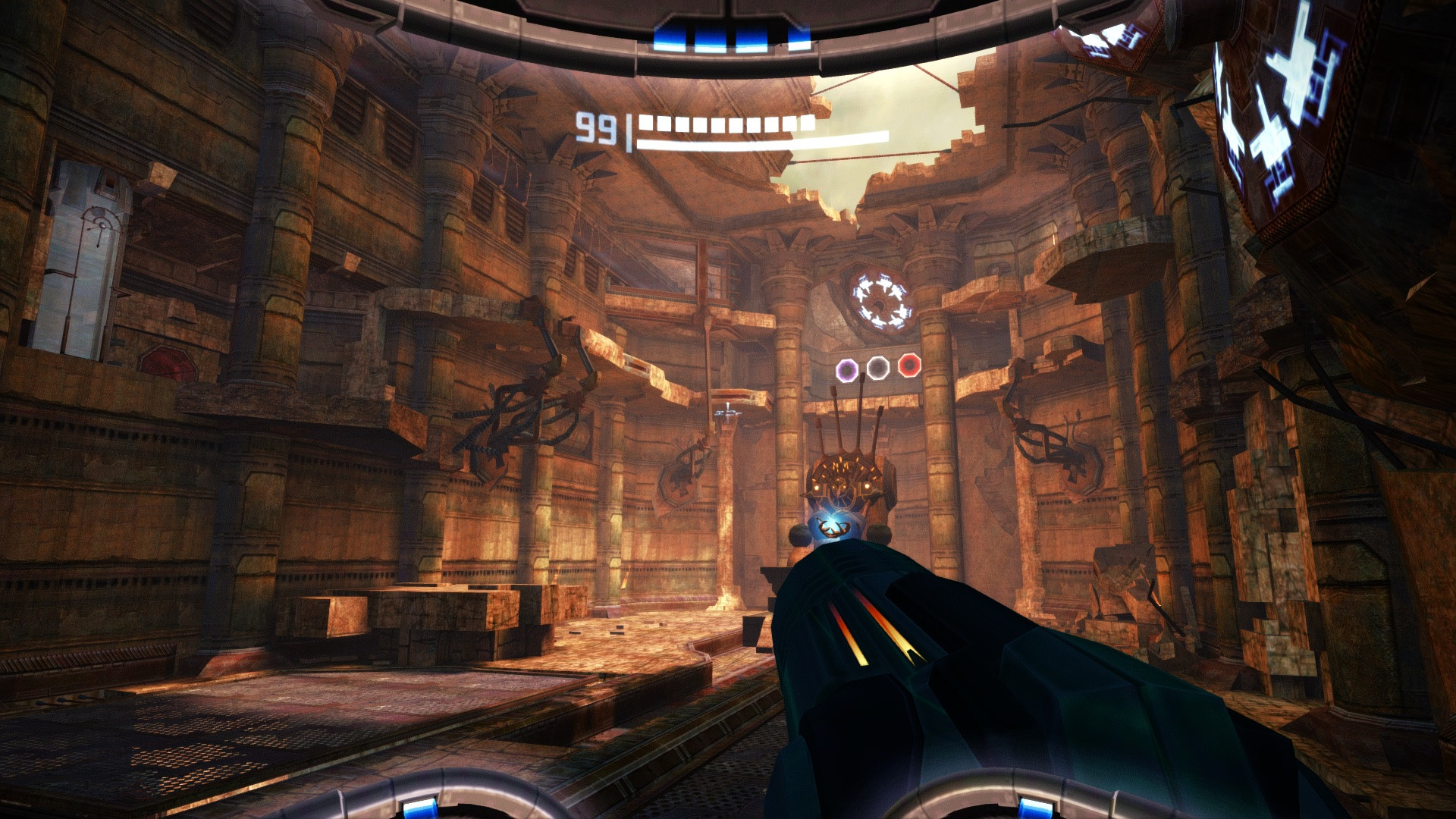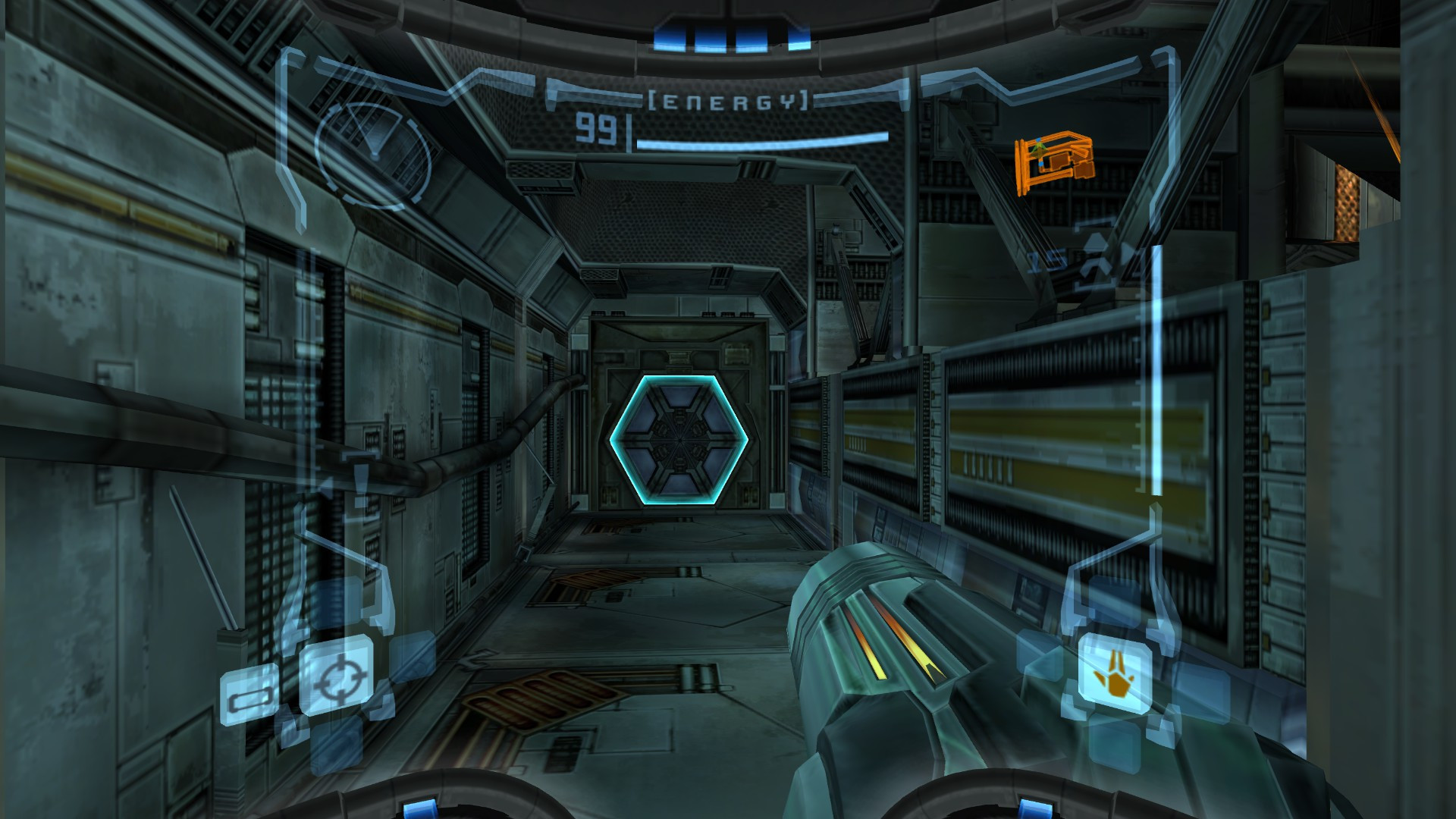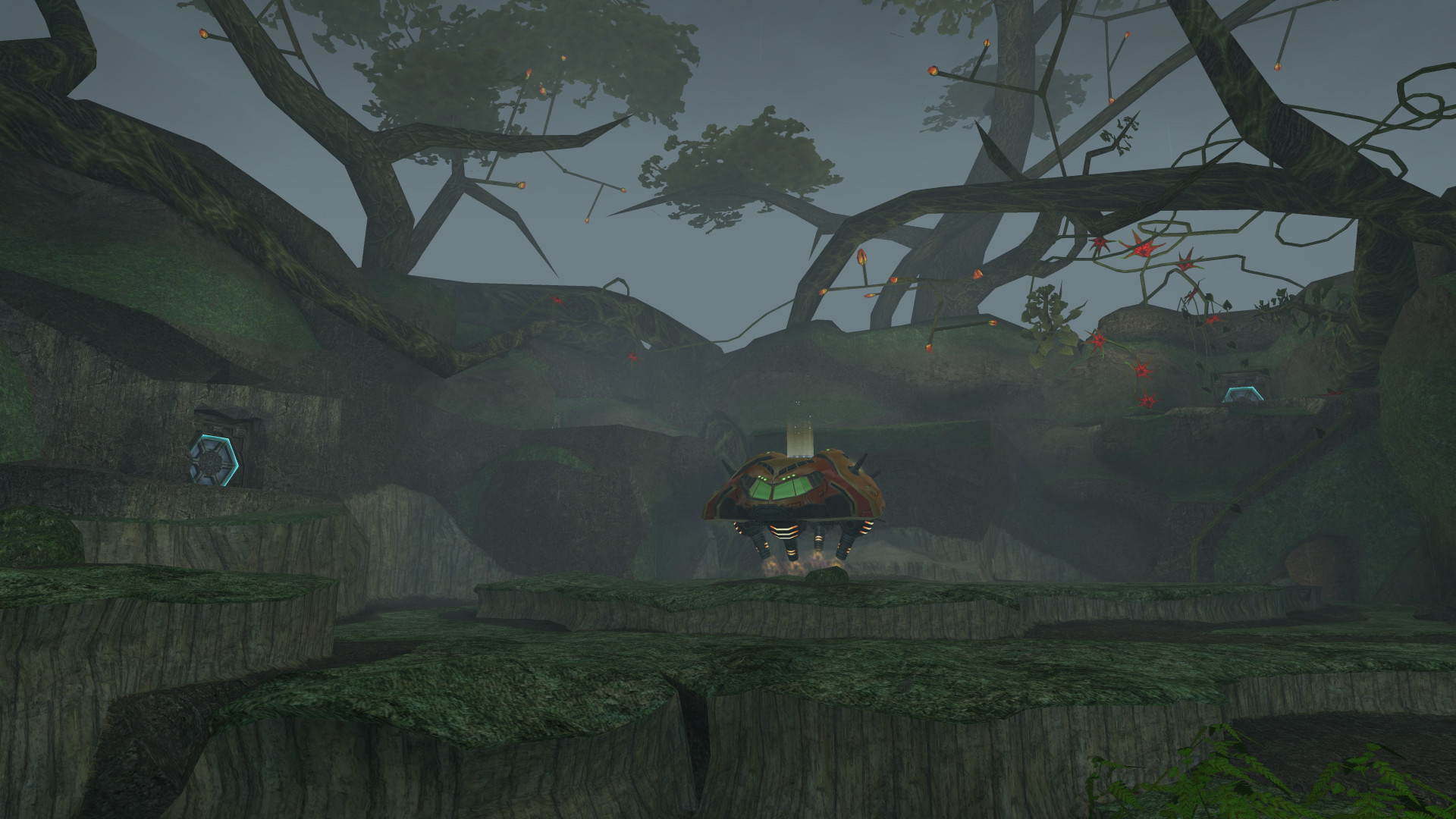
About SqncBrk
Sequence break is the act of obtaining an item out of order or performing certain action out of order. In…

The game subtitle is extremely appropriate. First 3D Metroid that is for the first time developed not by Nintendo R&D1 but by external studio. The series were always largely inspired by Hollywood sci-fi, so it’s fitting that the control over the game (with the overseeing from the Japanese producers) fell into the hands of US-based developer, Retro Studios.
Prime is almost too cautious in its footsteps. It carefully repeats almost all of the usual abilities from 2D games of the series. Turning into a morph ball, shooting rockets, double jump, various types of beams — everything is in place. You have even such stuff as the “secret” bomb-jump technique: timing a placement of bombs in a ball form you can access great heights unavailable with the ordinary jump. It was more intuitively discoverable in Gamecube version since jumping the bombs was the only option. The version for Wii (and consequently for Wii U) introduced the opportunity to dislocate your wrist flicking your WiiMote up and down trying to trigger a jump with motion gesture.
Prime trilogy reissue on Wii U is a strange beast. All three games are packed into one executable which launches in Wii emulation mode and renders GamePad a useless second shitty screen just mirroring your TV and nothing more. The console menu is inaccessible — so screenshots or MiiVerse for you. As you have perhaps guessed there were no graphical overhaul: no upscaling or retexturing, not even some anti aliasing. The worst though is the fact that only Wii control scheme is available even for the first two games which were originally released on GameCube. Yes, those controls were a bit weird, not your usual contemporary “left stick for movement, right stick for camera”, but they were better than a cringeworthy virtual mouse that you’re forced to use. Its low accuracy infuriating effect is magnified with inertia: the thing most gamers prefer to turn off even on physical devices. To switch your beam you have to hold down a button at the center of the WiiMote and then make a dragging movement to a section of the screen, so you can’t really do it while moving. It’s not humanly possible to quickly turn around, fire rockets or do a precise jump to the side. Yes, eventually you can get used to it, but with all that €20 adapters for GameCube controllers (which are good only for Smash Bros. it seems) one would expect Nintendo to show a little bit more love to one of its legendary series. Instead fans that are still not over the Other M after five years of waiting are greeted with the announcement of some weird spin-off and digital re-release that is actually worse of an experience than an original.

The space looks like it’s cardboard decorations of a 60-s sci-fi flick with its white star-dots slowly blinking in a lazy fashion. Then comes the voice. The speech is thankfully short but far too heroic and nonsensical. Spoken in a generic narrator-y style it leaves your head as soon as the last word is said. And then a small orange ship boards the large one. Frigate Orpheon is sending out a distress signal, so it’s time for Samus to do some investigating and shooting (mostly shooting of course). The heroine jumps out on the surface with a somersault obviously showing off her superhuman physique abilities. The camera makes a full 360° turnaround and moves inside her helmet. It’s time for a tutorial. Game introduces you to the basic controls and presents you with the most significant and important feature of the game: scanning. Switching your visor to this special mode you’re able to collect a bit of info about enemies, machinery and various other surroundings. It lets you read messages on computer terminals, open electronic locks and activate mechanisms. In short: this is your main tool for figuring out both the story and the world.
The game loves to remind you that what you’re seeing on the screen is “in reality” just another screen inside the power suit. An enemy infused with the electricity causes interference and turns off energy and rocket indicators. Fire some shots in the dark and you’ll see Samus’ face in the reflection. Steam jet from a rusty leaking pipe leaves condensate water drops on helmet’s screen. Prime sure knows how to create a beautiful and immersive picture with the little resources it has.
In the meantime there’s something fishy happening at the big ship you arrived at: systems are malfunctioning damaged by some blast and a lot of space pirates’ dead bodies are scattered around. To top it all off message logs talk about some kind of genetic experiments that were happening here. Not all crew members are dead, but their pathetic attempts to shoot you on sight achieve nothing. Equipped in your trustworthy power suit with an attached beam cannon you deal with enemies effortlessly. At the end of those corridors scattered with debris there is a giant insect, a failed attempt of space pirates to create a biological superweapon.

The first boss explains the core approach for the combat through the architecture of its room. The central area is perfectly circular; there is a hole in the center and the ugly big monster is hovering there for good measure. Parasite queen rotates around and spews nasty green goo at you, so naturally the best course of action is circling around laughing at the stupid bug firing rockets up its ass. This isn’t something exotic, a lot of games have a shooting, stepping to the side and a similar arenas or even just enough space to use these tactics against an AI. What makes Prime unusually focused on this concept is its controls. There is a dedicated button for keeping camera targeted on the enemy. Jumping to the side can be performed easily. Well, at least when there’s enough space and the terrain is decent, like in this case. The boss falls down and breaks the ship’s reactor. The siren sounds and a countdown appears on the screen. One more classic Metroid schtick.
As agile as you are, it doesn’t help at the end of the race. Samus is caught in the explosion. She falls to the bottom of the shaft; as the result most of the powers of the suit are off. It wouldn’t be Metroid if you didn’t have to recollect the upgrades. There is only one survivor except a bounty hunter escaping the destroyed ship; and that is the old nemesis, cosmic pterodactyl Ridley. Next stop — Tallon IV.

It rains. Some kind of jungle planet. Samus’s battleship form still doesn’t make any sense, but it’s a first save point and it restores your rocket ammunition. Onwards — to the dangers of the unexplored territory. It’s time to collect upgrades, unlock new zones and travel on gigantic elevators that are some weird standard all across the galaxy it seems. But mostly you will be scanning: space pirates leave around a surprising amount of notes documenting their supposedly criminal activity of mining radioactive Phazon and excavating Chozo ruins. The prophecies about the great warrior which these ancient bird-like creatures make for a second part of plot.
The game features a graceful hints system: it doesn’t exactly tell you what to do or enforce your route too strictly; it leaves figuring out a path to you and waits a bit to ensure you’re really lost. There’s a thin line between an occasional helpful tip and a game doing all the work for you. Prime may come close, but never crosses it staying on the territory of games that let you occasionally feel smart.
Sooner or later all puzzles will be solved, prophecies will be fulfilled and bosses will be defeated. Traditional words, MISSION FINAL will appear on the screen. And if you were persistent enough with finding hidden items Samus will take off her helmet (no bikini suit this time). And if 100% of those secret stashes were looted there will be an after-credits scene with a hint for the next installment.